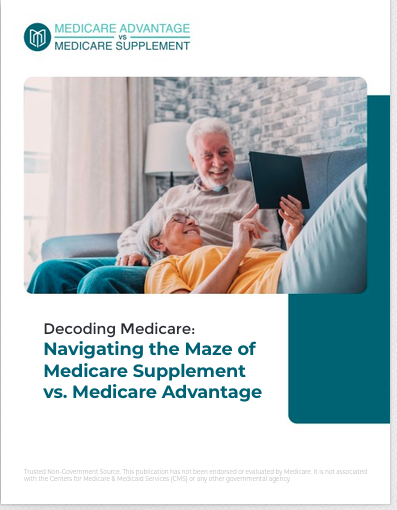Key Takeaways
-
Medicare Open Enrollment happens every year from October 15 to December 7, giving you a set window to make changes to your healthcare coverage.
-
Missing this period can result in higher costs, delays, or limited options, so understanding the process is essential.
Understanding the Medicare Open Enrollment Period
Medicare Open Enrollment is one of the most critical times of the year for beneficiaries. It allows you to adjust your healthcare coverage based on your needs. Whether you’re looking to switch plans, update your drug coverage, or ensure that your preferred doctors remain in-network, this period is your only chance to make changes without restrictions.
Who Can Make Changes During Open Enrollment?
This period applies to anyone who is already enrolled in Medicare. You can make changes if you have:
-
Original Medicare (Parts A & B) and want to switch to a different plan.
-
Medicare Advantage (Part C) and want to return to Original Medicare.
-
Medicare Part D (prescription drug coverage) and need to change your plan based on updated medication lists and costs.
Why Open Enrollment Matters for Your Healthcare
Making changes during Open Enrollment can directly affect your access to healthcare services and how much you pay for them. Here’s why it’s essential to review your coverage every year:
Plan Changes Can Happen Every Year
Medicare plans adjust their premiums, deductibles, copayments, and covered services annually. What worked for you last year may not be the best option for 2025. If you don’t review your plan, you might face unexpected higher costs or limited coverage.
Prescription Drug Coverage May Change
Each year, drug plans update their formularies (lists of covered medications). Your prescription might have moved to a higher-cost tier, or a plan may have dropped it altogether. Reviewing Part D coverage ensures you continue receiving your medications at an affordable rate.
Your Healthcare Needs May Have Shifted
If your health has changed, you may need a different level of coverage, provider network, or additional benefits. Open Enrollment gives you the opportunity to select a plan that matches your current situation.
The Consequences of Missing Open Enrollment
If you don’t make changes during the October 15 to December 7 window, you’ll likely have to keep your current plan for another year—even if it no longer fits your needs. In some cases, failing to enroll in a plan that covers your medications or preferred doctors could mean paying out-of-pocket for services or losing access to providers.
Late Enrollment Penalties
Certain Medicare components, like Part D, carry late enrollment penalties if you go too long without coverage. These penalties increase the longer you delay enrolling, adding permanent extra costs to your premiums.
Limited Exceptions to Make Changes Later
Outside of Open Enrollment, only a Special Enrollment Period (SEP) allows you to make changes, and that only applies if you experience specific qualifying events, such as:
-
Moving out of your plan’s service area
-
Losing employer coverage
-
Becoming eligible for a low-income subsidy
How to Prepare for Open Enrollment
Review the Annual Notice of Change (ANOC)
Your current Medicare plan sends out an ANOC letter every September, listing any upcoming changes in premiums, coverage, and provider networks. Reviewing this document helps you decide if you should stay in your plan or explore other options.
Compare Different Plans
Medicare offers various plans, and comparing them side by side ensures you’re getting the best coverage for your needs. When evaluating your options, consider:
-
Total yearly costs (not just premiums)
-
Provider networks (check if your doctors and specialists are still covered)
-
Prescription drug formularies
-
Additional benefits, such as dental, vision, or hearing coverage
Check for Extra Help or Savings Programs
If you have limited income, you may qualify for Medicare Savings Programs or Extra Help with prescription drug costs. These can significantly reduce your out-of-pocket expenses, but eligibility requirements change annually.
Common Mistakes to Avoid During Open Enrollment
Assuming Your Plan Will Stay the Same
Many beneficiaries believe that their plan will remain unchanged from year to year. However, costs, provider networks, and covered services shift annually—leading to unexpected expenses if you don’t verify your plan’s details.
Failing to Verify Drug Coverage
Medications move between different pricing tiers each year, and some may even be dropped. Ignoring these changes could leave you paying significantly more for your prescriptions.
Waiting Until the Last Minute
Procrastination can lead to rushed decisions and missed opportunities. Start reviewing your options early to ensure you have enough time to make an informed choice.
What Happens After Open Enrollment Ends?
Once Open Enrollment closes on December 7, the changes you made will go into effect starting January 1, 2026. If you didn’t make any adjustments, you will remain enrolled in your current plan for another year.
Making Corrections if You Chose the Wrong Plan
If you realize your new plan isn’t right for you, you may have one more chance to switch during the Medicare Advantage Open Enrollment Period (January 1 – March 31). However, this only applies if you have Medicare Advantage—it does not allow Original Medicare beneficiaries to switch Part D plans or enroll in a new Advantage plan.
Making the Most of Medicare Open Enrollment
The best way to take advantage of Open Enrollment is to stay informed and proactive. Here’s what you should do every year:
-
Mark your calendar for important Medicare deadlines.
-
Read your ANOC letter as soon as it arrives in September.
-
Compare plans early to avoid last-minute stress.
-
Seek professional help if you’re unsure about your options.
By staying engaged in the process, you can ensure you’re in the best Medicare plan for your healthcare needs and budget.
Need Help Choosing the Right Plan?
If you need assistance navigating your options, getting in touch with a licensed agent listed on this website can help you make an informed decision. They can explain plan details, compare costs, and guide you through the Medicare Open Enrollment process.










